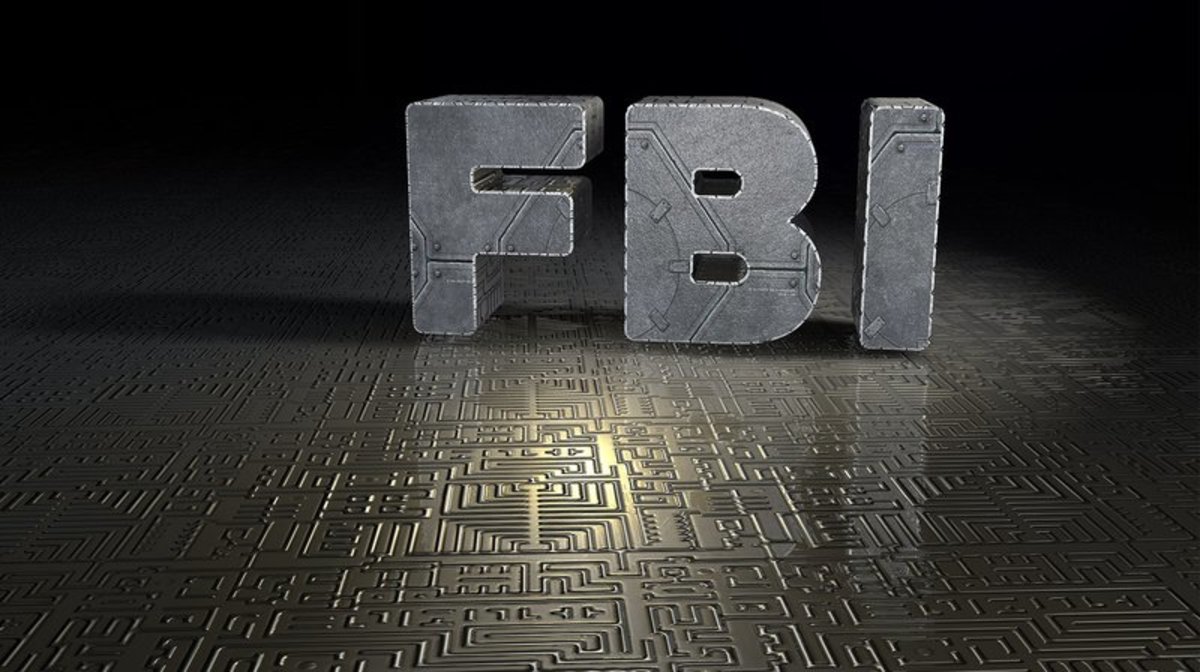Month: April 2024
Japan’s yen tumbles to 34-year low; US dollar gains after inflation data
Post Content
Top 10 Tips for Every Bitcoin Multisig Beginner
Originally published on Unchained.com.
Unchained is the official US Collaborative Custody partner of Bitcoin Magazine and an integral sponsor of related content published through Bitcoin Magazine. For more information on services offered, custody products, and the relationship between Unchained and Bitcoin Magazine, please visit our website.
As technical director on the Concierge team at Unchained, I’ve fielded countless client questions about bitcoin multisig. If you’re just beginning to understand the benefits of multisig and how it works in a collaborative custody context, I hope these ten tips will address some of your questions.
Bitcoin doesn’t live on your device
The phrase hardware wallet might make it seem like your bitcoin live inside the wallet itself, but that’s not the case—bitcoin is never in your device at all. In actuality, your wallet generates and stores your keys only. Your wallet also makes accessing the keys user-friendly by either plugging your device into a general-purpose computer or sharing information with your computer via a microSD card.
So where does bitcoin live, then? The bitcoin blockchain is a ledger that keeps track of every transaction that has ever occurred and the balances of every address on the network. Instead of storing your bitcoin, your hardware wallet protects and stores the keys used to unlock—or spend—bitcoin from those addresses.
Visit Unchained.com for $100 off any Unchained financial services product with code “BTCMAG100“
You can restore your seed phrase to another hardware wallet
When you set up a bitcoin hardware wallet that respects best current practices, you should be prompted to back up your wallet using 12 or 24 words, typically on a slip of paper that the manufacturer suggests you protect in case something happens to your wallet. These 12 or 24 words are your seed phrase, as established in Bitcoin Improvement Proposal 39, or BIP39.
Your seed phrase is like the “key to the castle,” it contains everything you need to recover and use a key to all of the addresses protected by the seed phrase.
The nice thing about BIP39 seed phrases is that they are interoperable among hardware wallets that support the standard, which means you can recover your bitcoin wallet backup (seed phrase) to another brand of hardware wallet. If you initially set up your bitcoin wallet on a Trezor and want to move to a Coldcard, it’s as simple as importing those 12 or 24 words.
Read more: How to replace or upgrade a bitcoin hardware wallet
You don’t need your hardware wallet with you to receive
With physical cash, you have to be physically present to trustlessly and securely transact with another party. Bitcoin fixes this for the digital world. If you want to receive bitcoin but don’t have your hardware wallet at hand, you can still have a payment sent to the appropriate address.
As mentioned above, bitcoin does not live on your hardware wallet; it lives on the bitcoin blockchain. For that reason, as long as you or someone else sends bitcoin to an address that you hold the private keys to control, you’ll always be able to move those funds regardless of whether you have physical access to your device. If bitcoin is sent to an address you know you control, it will arrive perfectly fine in the background without your involvement.
What this means for you: If you create a multisig wallet and store your hardware wallets or seed phrases in secure locations, you don’t need to have physical access to them to deposit funds.
A device used as a key in multisig can still be used as a singlesig wallet
Multisig involves constructing a multisig wallet using the public keys of multiple devices, each of which could also serve as a standalone singlesig wallet without any issues. When you create a multisig wallet following the emerging standard processes, the preexisting singlesig counterparts have no idea the multisig wallet exists.
You could think of it as a group email address that forwards to multiple individual email addresses.
This means that, if you wanted, you could store smaller amounts of bitcoin on a singlesig wallet—all while keeping your primary wealth in a multisig wallet constructed using that device as one of the keys.
Confirm your multisig deposit address
Bitcoin transactions are completely irreversible, which means if you send your bitcoin to the wrong address, it can be lost permanently. Thankfully, you can use hardware wallets to check your multisig bitcoin address on the device before sending funds.
Checking your address on your device confirms three things:
that the address was built correctly (i.e. that it’s 2-of-3 multisig, for example, and not 2-of-5 where an attacker has added two keys and actually controls the funds)that the computer you’re working on isn’t compromised with malware that finds and replaces bitcoin addresses with an attacker’s address, andthat your device holds a key to the address.
Checking the address on your device should be done before sending meaningful amounts of funds to any address, whether singlesig or multisig. As of this writing, Trezor and Coldcard support checking multisig deposit addresses in the Unchained platform.
Read more: How do I verify the receiving/deposit address on my hardware wallet?
You don’t need your devices physically together to sign
With multisig, you don’t need to have all your keys in the same place at the same time to spend bitcoin. That means you can sign a transaction in Austin with one key and sign a day later in Dallas with the other. The transaction can only be broadcast after all the necessary signatures have been collected (two in a 2-of-3 multisig scheme, for example).
This is a significant advantage over other bitcoin custody models like Shamir’s Secret Sharing Scheme, which allows you to distribute control over your bitcoin private key by splitting it into multiple parts (secrets), but requires all parts to be present at the same time to recompile a single key and author a transaction.
You can make a mistake in multisig and still recover your funds
In all bitcoin multisig setups where m (the number of keys required to sign) is less than n (the total number of keys in the quorum), you are protected from single points of failure and can still recover your funds in the case that one or more critical items are lost, stolen or otherwise compromised.
There are scenarios in 2-of-3 multisig (with a collaborative custody partner like Unchained holding the third key), where as many as three items could be compromised before it becomes impossible to recover your funds.
Some ideal places to store bitcoin wallets and seed phrase backups
Even though fault-tolerance in multisig provides peace of mind, all of these scenarios should still be protected against at all costs by following seed phrase and hardware wallet storage best practices, and you should always regain full control as soon as possible in the event that any of your critical items are lost or compromised. And that leads us to number eight…
Read more: The ultimate guide to storing your bitcoin seed phrase backups
You can replace a key in your multisig setup if needed
When using bitcoin multisig, if you ever lose a wallet or misplace a seed phrase, it’s important to replace this key in your multisig m-of-n scheme. You can do this with any of the popular multisig wallets.
Even if a single compromised key does not alone jeopardize your funds in most common multisig m-of-n schemes, replacing a compromised key will ensure that you regain complete control over your funds and eliminate the possibility that the key could ever be used against you in the future.
In a collaborative custody model like the one we use here at Unchained, replacing a key is straightforward. You can simply log in to our platform, choose the key that has been compromised, and quickly replace it with a new one. You can read the full process for replacing or upgrading a hardware wallet at the link below, and if you’re already an Unchained client, check out our Knowledge Base article.
Visit Unchained.com for $100 off a Bitcoin IRA + 1 year free of Bitcoin Magazine Pro market research with code “btcmag“
Read more: How to replace or upgrade a bitcoin hardware wallet
You can construct multiple multisig wallets using the same devices
As we mentioned in number four on this list, using your hardware wallets/seed phrases for both a singlesig wallet and to construct a multisig wallet doesn’t cause any issues. Similarly, using your hardware wallets/seed phrases for more than one multisig wallet doesn’t cause a conflict among those wallets as long as you aren’t using the same extended public keys (xpubs). This is typically represented as a multiple accounts feature in most bitcoin wallets.
Hardware wallets allow you to use different xpubs from different derivation paths, which is a technical way of saying a different set of bitcoin keys on your hardware wallet generated by the same 12- or 24-word seed phrase. This means you can create multiple multisig wallets that stem from the same set of seed phrases/devices, like using the same devices for a personal vault and an IRA vault. Maybe even a loan vault as well!
Collaborative custody doesn’t introduce a single point of failure
When getting started with multisig collaborative custody at Unchained, one concern I hear a lot relates to dependence on our platform. If Unchained were to cease to exist or have significant downtime, how would you recover your funds if your wallets were constructed using our tools?
Our multisig platform is designed to eliminate all single points of failure, and that includes ourselves. As our platform is fully interoperable with established bitcoin standards, you can always recover access to your vault outside the Unchained platform with compatible software like our open-source multisig coordinator, Caravan, or bitcoin wallets like Sparrow or Electrum. Just make sure to safely back up your wallet configuration file!
Read more: How can I recover my vault funds using Caravan?
Originally published on Unchained.com.
Unchained is the official US Collaborative Custody partner of Bitcoin Magazine and an integral sponsor of related content published through Bitcoin Magazine. For more information on services offered, custody products, and the relationship between Unchained and Bitcoin Magazine, please visit our website.
Shadow Boxing: Comments On Proof-Of-Work Centralization Hysteria
The always-relevant Marty Bent had Spiral developer Matt Corallo on his podcast this week to address the freaks about urgent Bitcoin mining matters.
To bring everyone up to speed, the concerns stem from recent sleuthing of the blockchain which revealed that some pools have been getting perhaps a little too cozy.
How do we know this? Well, everyone’s favorite snoop mononaut recently pointed out that an unusual percentage of Bitcoin’s mining reward was being consolidated under the control of a single custodian.
How bad is it? Well about 47% of the hashrate, on a good day. Yeah, pretty bad.
Now why in Satoshi’s name would they do such a thing, you ask?
C.R.E.A.M.
To begin with, have you looked at the hashrate chart lately anon? You practically can’t tell it apart from the US debt hockey stick. Backed by hardware advancement, public balance sheets, and increasing forays into cheap energy sources, Bitcoin mining has turned into an arms race. Since the Chinese mining ban of 2021, the network’s hashrate has more than quintupled.
The effects this has had on miners’ margins are self-explanatory. Everyone is squeezing each other out. The recent bear market saw a bunch of consolidation, particularly on the Western front. At the pool level, Foundry has been the biggest benefactor with nearly 25% of the current hashrate, down from 35% last year.
The reason they attained such dominance so quickly is something Bitcoiners are well acquainted with: volatility. In this case, it’s more often referred to as variance. Others call it luck.
Luck, under the conditions described above, can make or break your business. It’s the reason pools exist in the first place. Proof-of-work is a random process and randomness is the bane of cash flow. By combining your hashrate with others, you improve your odds and, perhaps, manage a more reliable revenue stream.
This is important because when your bills come due every month, your utility provider doesn’t care about your misfortunes. The tighter the margins, the more vulnerable you are. In today’s competitive environment, it’s a matter of survival.
What does any of this have to do with Foundry?
Well, it turns out another way to smooth over miners’ income is to adjust your pool’s payout scheme and completely remove variance from the equation. How? Simply pay them for their work regardless of how often you might mine a block. A process referred to as FPPS (Full Pay Per Share).
If that sounds expensive to you that’s because it is. The pool effectively has to front every payment out of pocket and hope they can pay themselves back with the blocks they eventually mine. If you hit a bad streak and your balance sheet isn’t strong enough to absorb the lack of revenue, you’re Sam Bankman Fried.
Enter Foundry. Through a combination of uncanny timing, business savvy, and a DCG-sized war chest, they’ve created a financial moat around their pool operations that makes it very hard for smaller players to come in and compete.
Of course, it’s slightly more complex in practice, but that’s pretty much the gist of it.
Back to our little posse of pools and the mysterious custodian. Have you figured it out yet?
The same game is playing out on the other side of the pond. It’s very likely that the emergence of Foundry as a major player exacerbated the dynamics laid out above and forced smaller pools to capitulate.
The execution appears to be slightly different but it’s essentially the same model. We can validate that several pools now share the exact same block templates. This matches with reports that Antpool is offering white-labeling services.
That’s right — proxy mining is, apparently, a business model.
On top of this, the aggregation of coinbase outputs suggests that an even larger percentage of the hashrate seems to be financing their operations through the same provider.
To put it another way: a single entity writes the checks for almost half of the network’s hashrate.
Dollar dollar bill, y’all.
If what you say is true. The Shaolin and the Wu-Tang could be dangerous
As you would expect, this situation led some talking heads to raise some alarming questions about mining centralization. For context, this is not the first time mining gets awkwardly consolidated.
Seems every cycle there is a doomsday mining centralization brouhaha and like clockwork someone panics and says we should press the red button.
2008-2012 the advent of GPU/ASICs
2012-2016 network latency lead to GHash
2016-2020 Bitmain manufacturing monopoly
2020 till today…
— Alex B (@bergealex4) April 25, 2024
As I wrote in this week’s Weekly Re-Org, time is a flat circle. The Proof-Of-Work centralization Manbearpig comes out of his cave every cycle. It’s a seasonal happening.
What’s rather unusual is for one of the most senior developers in this space to go full DEFCON 1.
Let’s work on a PoW change now.
— Matt Corallo (@TheBlueMatt) April 26, 2024
I will leave it to more serious journalistic outlets like the Bitcoin Bugle to speculate on the strange coincidences between this outburst and the fact that Matt’s employer has mining ambitions.
Look, it’s not pretty. I think we can all agree that such a significant portion of the hashrate being at the mercy of a handful of bankers is gross. Bitcoin’s security relies on miners aligning with their financial incentives. If that is the outcome, something’s wrong and censorship resistance is at risk.
The reaction, though, is unwarranted. Bitcoin mining has followed noticeable growth patterns throughout its history and this particular one is not different. It is a market driven by economics and not by code. Inefficiencies arise at every stage and are subsequently dampened as the industry progresses.
I understand every man who owns a keyboard looks at everything like a bug but the current reality does not fit this framing.
Everyone applauds the work that has gone into StratumV2 to optimize the mining interface but it’s not an answer to the current predicament. Even if they can be custom, transaction templates are still permissioned. The pools can always reject any transaction they deem haram. Patronizing operators for showing little interest in the solution and miners for not demanding it is verging on hubris.
Custom transaction selection cannot be relied upon for censorship resistance. Only the market can realistically address this problem and it just so happens that Bitcoin is explicitly designed to be robust to mining majorities. Using fees, users create a financial incentive for competing miners to drive enough hashrate behind a transaction for it to be mined. Curiously, this implies that, in a perfect world, every miner is mining off of the same template: the most profitable one.
In practice, things are a little more shall we say… spooky. As uncomfortable as this may be, censorship is inevitable. Following this week’s events, the writing is on the wall and while a lot of grief is given to Chinese miners, it seems most likely to come from our side.
By far the most disappointing aspect of this agitation is the endorsement of a change to the Proof-Of-Work algorithm. The threat being levied against us by the State as we currently speak makes the rhetoric around firing miners especially aggravating. It’s tone-deaf and shows a complete lack of discernment about the challenges before us. Divide and conquer, anyone?
To make matters worse, we know that throwing the baby out with the bath water is a recipe for disaster. Changing the algorithm. “Firing the miners.” It achieves nothing.
Again, the technocratic mind is blind to any issue not resolved by a pull request.
By going scorched earth, you ensure that only the most well-capitalized participants will ever participate in your game. Hashrate can be wiped away at the stroke of a key but technical prowess and large enough bags can endure nuclear winter. The ASIC manufacturer market likely resets to a single player, one who already specializes in custom algorithms. Monopolies relish nothing more than good old interventionism to help shed the competition.
From a consensus perspective, the idea is so absurd it flies in the face of the entire premise of the system.
If Bitcoin requires social coordination to throttle the whims of the market and fiddle with its incentives, it is a failed project. Proof-of-work is an economic design, not a technical contraption you can fix with code.
Wu-Tang Financial
Well, I can only humbly propose we begin to consider addressing market dynamics with market solutions.
To the best of my understanding, the underlying issue is related to Bitcoin’s capital markets. Resourceful actors who quickly caught on to the issue faced by smaller mining operations have filled a hole in the market and left no room for anyone else. Economies of scale and the perceived risk associated with mining have kept competitors at bay.
There is an opportunity here for a handful of ambitious players to bring balance to this market and allow pools to source capital without bending the knee to larger competitors. This won’t happen overnight. Relationships must be built and the general information asymmetry that has plagued this market must be addressed.
This is why we must stop burning bridges.
Of course, technical improvements can also be made to mitigate the underlying variance problems but they cannot remedy the growing pains of an immature market.
Bitcoin, in every respect, is going through its teenage years. No one wants to be told what to do and pushing one way will inevitably lead to resistance. Sure, there might be no rhyme or reason to what some participants decide to do but it’s not anyone’s place to decide for them.
This too shall pass. Until then…
Wu‐Tang Clan Ain’t Nuthing ta F’ Wit
EU Parliament Adopts AML Laws Regulating Bitcoin Based On Questionable Assumptions
The European Parliament adopted a new AML law package which increases the reporting requirements of crypto asset service providers (CASPs) when sending and receiving ‘anonymous’ payments between self-hosted wallets and custodial service providers, in addition to limits on cash transactions and the establishment of a ‘central watchdog’ agency, which will develop regulatory technical standards.
Under the new laws, EU CASPs will need to perform customer due diligence on transactions originating from self-custodial wallets for transactions below 1000 EUR, and implement additional KYC measures for transactions above 1000 EUR. The laws further regulate the operation of no-KYC custodial software service providers and the use of privacy coins, effectively banning CASPs from offering privacy assets. Self-custodial software and hardware providers are exempt from the regulations.
The resolution, adopted by the European Parliament on wednesday, assumes that “[t]he anonymity associated with certain electronic money products exposes them to money laundering and terrorist financing risks,” and “[t]he anonymity of crypto-assets exposes them to risks of misuse for criminal purposes.”
While lawmakers seemed to have no issues putting numbers to overall money laundering activity in the original proposal – ranging between 2-5% of global GDP – as well as to their own inefficiencies – almost 99% of criminal profits escape confiscation – those looking for numbers corroborating “the increasing use of crypto-assets (such as Bitcoin) for money-laundering purposes” are left with a link to Investopedia, explaining what Bitcoin is.
Everybody knows: Crypto is for money launderers. But can anybody prove it?
With the new law package, EU AML/CFT frameworks are updated to align with updated recommendations issued by the Financial Action Task Force – an intergovernmental body established by the G7 in 1989 to tackle money laundering and terrorist financing.
According to FATF procedures, FATF recommendations are informed by AML and CFT assessments performed by FATF regional bodies (FSRBs), the IMF, and the World Bank to “produce objective and accurate reports of a high standard in a timely way,” “[e]nsure that there is a level playing field, whereby mutual evaluation reports (MERs), including the executive summaries, are consistent, especially with respect to the findings, the recommendations and ratings,” and “[e]nsure that there is transparency and equality of treatment, in terms of the assessment process, for all countries assessed.”
The latest EU FSRB 2021 annual report, released in April 2023 performed by the EU Commission’s MONEYVAL, opens with a introduction by the chair, who highlights that “It is well known that money launderers have been abusing cryptocurrencies from their inception a decade ago, initially to transfer and conceal proceeds from drug trafficking. Nowadays, their methods are becoming ever more sophisticated, and larger in scale.”
But MONEYVAL’s report appears to fail to back its claims with sufficient data points, merely making note of the progress of implementation of virtual asset regulations. The report highlights that “a 2022 typologies study will be dedicated solely to cryptocurrency money laundering trends,” suggesting that no such study existed at the time of writing.
The MONEYVAL typologies report on money laundering and terrorist financing risks in the world of virtual assets seems to give no conclusive answers on the significance of cryptocurrencies in AML/CFT efforts either; Instead, it analyzes the application and effectiveness of existing AML regulations via working groups.
Notably, the typologies report states that “at the national level, the sector risk analysis heavily relies on the answers received by the authorities from the private sector itself, with very little action taken towards the verification of the facts by the supervisor.” It further notes that risk assessments “lack in depth.”
The latest IMF report on policies for crypto assets makes similar statements hinting towards a lack of verifiable data on the risks of cryptocurrencies in terror financing, anti-money and financial abuse, stating that “such impacts have not been studied specifically in relation to crypto-assets“. A new IMF report released this week, which attempts to analyze cross border-flows in Bitcoin, states that “measuring Bitcoin cross-border flows is challenging, and currently only possible with a series of non-trivial assumptions.”
The IMF’s 2024 global financial stability report in contrast does cite specific data, but places the overall amount of cryptoassets received by ransomware hackers at approximately $1100 Million – a mere 0.061% of crypto’s $1.8 Trillion market capitalization.
The World Bank’s 2023 report on lessons learned from the first generation of money laundering and terrorist financing risk assessments found that “some new issues were not covered in the last NRA, such as VA [virtual asset] […]”, and that it should be ensured that “authorities and private entities provide more data for input” and “assess more risks such as VASPs.”
A World Bank 2022 publication on national assessments of money laundering risks makes no mention of cryptocurrencies at all, beyond finding that virtual currencies should be “studied further”. The paper “Illicit Transaction Flows: Concepts, Measurement and Evidence” published in the World Bank Research Observer in 2020, makes no mention of virtual assets, bitcoin or cryptocurrencies either.
Papers published by the World Bank on crypto asset adoption do not provide much more insight into the impacts of cryptocurrencies on AML/CFT efforts either – The papers “Crypto-Asset Activity around the World” and “What Does Digital Money Mean for Emerging Markets and Developing Economies?” simply re-refer readers to existing FATF recommendations.
The World Bank paper “Decrypting New Age International Capital Flows” cites a single academic paper on the effects of cryptocurrencies on money laundering, claiming to have found that “approximately one-quarter of bitcoin users are involved in illegal activity.” While there are many scientific papers attempting to assess the significance of cryptocurrencies in illicit transaction flows, academics broadly question the accuracy of applied methodologies, claiming to have found error rates of over 92% in commonly applied heuristics. Particularly methods based on user behavior are argued to be “the most unreliable”, concluding that their application should not be used to warrant intense investigative measures.
Assessing Proportionality: National Security vs. Human Rights
Estimates of illicit transaction volumes range between 0.34% in all on-chain transaction volume in 2023 and 46% of all bitcoin transaction volume in 2019, highlighting the apparent lack of a conclusive understanding of the significance of cryptocurrencies in enabling the facilitation of illicit transactions.
In a 2024 National Risk Assessment, the Swiss federal police classifies such “tremendous lack of data” as an “inherent risk”, citing “insufficient figures and statistics”. The assessment highlights that the lack of data on cryptocurrency financial flows is “not unique to Switzerland”.
The assessment highlights statements made by the ECB, which “pointed to a lack of reliable statistics” on financial flows associated with cryptocurrencies. It further highlights statements made by the IMF, finding that “significant data gaps continue to make it difficult to assess the true extent of VA [virtual assets] use in the financial system, which also hampers risk analysis by financial authorities”. It notes that the IMF has recommended to initiate an international exchange of statistical data on cryptocurrency transactions to “address the lack of data” as early as 2019.
Seemingly echoing MONEYVAL’s concerns on the evaluation of suspicious transaction reports, the assessment finds a survey conducted among national police and prosecutors to gather quantitative information on criminal proceedings in cryptocurrency transactions and qualitative assessments of the challenges of cryptocurrency for the work of law enforcement to be “fragmentary” and “of limited relevance”.
Cybersecurity experts warn of the risks of cryptocurrency deanonymization tactics in relation to established fundamental rights, finding that future regulatory concepts may collide with fundamental rights such as the right to freedom of association, the right to privacy and the right to informational self-determination, the right to freedom of expression, and the right to freedom of information as established in the Charter of Fundamental Rights of the European Union as well as the European Convention on Human Rights.
As governed by article 5 of the Maastricht Treaty, actions applied by the European Union “shall not exceed what is necessary to achieve the objective of the Treaties.” It is questionable how MEPs have issued an informed vote on the proportionality of the EU’s new AML laws when no conclusive data on the significance of cryptocurrency in anti-money laundering and counter terrorist financing efforts appears to exist.
This is a guest post by L0la L33tz. Opinions expressed are entirely their own and do not necessarily reflect those of BTC Inc or Bitcoin Magazine.
Bitcoin Is Built To Last: How The Network Defends Against Attacks
Bitcoin is one of the most robust distributed systems in the history of mankind. For fifteen years it has ticked along block by block with only two disruptions in its first few years that were very quickly handled by responsive developers the minute they manifested themselves. Aside from that, it has ticked along producing a block roughly every ten minutes with no interruptions.
This reliability has set a golden standard of expectations for Bitcoin users, encouraging them to view it as a completely unstoppable system. In many peoples’ minds, Bitcoin has already won, and the world is just catching up with that realization. “Bitcoin is inevitable” as many would say.
This doesn’t mean that Bitcoin is literally unstoppable though, there are possible events that could cause massive damage or disruption to the network if they were to occur. We’re going to go through a few of these examples today and see how they would likely play out.
Government Intervention
Bitcoin represents a serious conundrum for governments worldwide in multiple ways. First, it functions as a system allowing global payments to flow from one user to another, irrespective of borders or financial controls.
But while governments can’t stop the overall Bitcoin system from continuing to function, they can introduce regulations to impact its participants. In order to really disrupt the Bitcoin network itself governments would have to go after the miners that actually add new blocks to the blockchain to keep the system progressing forward.
This was done before in 2021, when the Chinese government banned bitcoin mining. Almost 50% of the network hashrate went offline as Chinese miners began migrating to the rest of the world.
The network kept on ticking.
In the worst-case scenario, the Chinese government could have enforced confiscation of mining hardware. That would have left the CCP in control of all of those miners, which could have been put to use engaging in a 51% attack on the network. But that didn’t happen. Even if the confiscatory approach had been taken, rather than simply enforcing a mining ban, it would have been deeply unlikely to succeed in attacking the network given the complexity of coordination among collaborators.
For example, one of the places large amounts of hashrate migrated to was Iran. Lots of rumors circulated at the time of miners bribing Iranian military officials in order to get their machines past customs into the country.
If governments attempted to seize mining equipment and closed borders preventing equipment from being shipped internationally, the possibility of bribing government officials or illegally smuggling them out is very real given the financial incentive to do so. For such a seizure event to present an existential risk to the network itself, a government would need to be able to seize over 51% of the active network hashrate. All it would take is a small enough percentage to sneak through the borders to ensure that what was left to be seized did not surpass that 51% threshold and the network would remain safe.
As hashrate further decentralizes around the globe, the possibility of such an action creating a risk to Bitcoin itself continues to shrink. While it still remains a possibility, the more governments that would be required to cooperate to pull off such a move, the less likely such an event is. Bitcoin’s resilience shines through, as empirically demonstrated by the actions of the CCP in 2021.
Power Grid Failure
Bitcoin miners cannot function without electricity. They’re computers at the end of the day, so that’s an obvious reality. This presents a big risk to miners who depend on power generation and delivery infrastructure.
Many natural disasters can cause power failures and issues with the grid. Hurricanes, wildfires, extreme weather events like cold snaps can disrupt power infrastructure. A prime example of a of such events impacting hashrate was seen in Texas during winter storm Uri in 2021. The scale of these events, however, do not directly pose a systemic risk to the Bitcoin network. Texas losing power, even with ~30% of the network hashrate located within the state, would not bring down or destroy the Bitcoin network.
As shown in 2021 during the Chinese mining ban, even with ~50% of the network hashrate going offline in an incredibly short period of time, the network continued to function. Yes, the blocktime interval increased dramatically and induced a large spike in transaction fees to confirm transactions quickly, but the network itself continued functioning and processing transactions without interruption.
Even if we were to imagine a much larger scale event, such as a massive solar storm knocking out power for half of the entire planet, the other half would still have functioning power. The miners located in that half of the globe would continue mining, continue confirming transactions, and the network would march along functioning just fine for half of the planet. Even people on the half of the globe without power, as long as they have maintained a physical backup of their seed phrase, will still have access to their funds whenever power is restored or they can make their way to a place with a functioning grid.
Power would need to be taken out for essentially the entire planet to actually kill Bitcoin, otherwise, it will keep chugging away in a corner somewhere until power is brought back online and it can “regenerate” itself expanding back around the globe.
Internet Disruptions
While the internet is composed of decentralized protocols in a similar fashion to Bitcoin, the actual infrastructure underlying it is owned mostly by large multinational corporations and governments (again similar to Bitcoin infrastructure like miners). The ownership of this infrastructure is still relatively distributed among many players globally, but it is not the same degree of distribution as a highly decentralized system like a mesh network.
There are still rather large chokepoints and bottlenecks that if disrupted or attacked can cause a massive degradation of reliability and functionality. Almost everyone connects to the wider internet through an Internet Service Provider (ISP), this market is dominated in most of the world by a handful of large providers in any given region. There isn’t much choice between providers, and this represents a large chokepoint for people interacting with the internet. If an ISP filters or denies you access and there isn’t another provider to choose from, you’re in trouble.
Similarly, your ability to talk to someone on the other side of the world is due to larger “backbone” networks run by major corporations, and underwater fiber-optic cables along the ocean floor. These cables are highly centralized chokepoints for communications between different countries and continents. If the operators were to begin filtering information passing through them, or someone were to physically sever the cables themselves, it could cause massive disruption of global internet traffic.
So what could actually be done if either of these things happened? If an ISP started filtering Bitcoin traffic to users, people would have their nodes disconnected from the network. Broadcasting transactions might be impossible, depending on how harshly the ISP filters traffic. But the rest of the network would keep chugging along. Services like Blockstream’s satellite feed exist, and a bitcoin transaction is such a small piece of data that any momentary connection to an unfiltered network would be enough to broadcast your payments.
Even larger-scale interruptions of connections between countries or regions amount to a simple irritation in the grand scheme of things. Let’s say a country like Russia had its internet connection to the outside world completely severed. If Russian miners didn’t shut down, the blockchain would fork into two separate chains because miners inside and outside Russia would not receive each others’ blocks. Whenever that connection was repaired, whichever group of miners had mined a longer chain would simply “overwrite” the shorter one, erasing the transactions that took place on the other shorter chain.
There is also a high possibility such a chainsplit doesn’t even occur in such a situation. Blockstream’s satellite service offers a way for people even without the internet to continue receiving blocks in real time from the rest of the network. This, in combination with satellite uplinks (which are not as simple to block), or even radio relays, could allow Russian miners to continue mining a single blockchain with the rest of the network through an outage.
Yet again, Bitcoin’s resilience can find a way.
Wrapping Up
Bitcoin is not quite literally invincible, or unstoppable, but it is unbelievably resilient in the face of disruption or adversarial attack on the network. It was literally designed to function this way. The entire point of decentralized networks is to be robust in the face of threats and disruptions, and Bitcoin has succeeded amazingly in that design goal.
The world has, and will continue to see, incredibly massive destructive events. Whether that entails weather events or cosmic events, acts of intentional sabotage or warfare, or just plain old government regulation, Bitcoin has survived many of them already. It will most likely continue to survive everything thrown at it into the future.
It’s not invincible, but it is resilient. The type of event or disaster it would take to actually take Bitcoin offline permanently would be something of such a massive scale of destruction, that in the unlikely event it does occur, we will all have much bigger problems than Bitcoin ceasing to function.
‘Asia’s MicroStrategy’ Metaplanet Buys ¥1 Billion Worth Bitcoin as Pledged
Metaplanet, a publicly-listed Japanese company providing hotel-related and other services, has announced the purchase of ¥1 billion (approximately $6.25 million) worth of Bitcoin.
NEW: 
Game theory has started playing out 
— Bitcoin Magazine (@BitcoinMagazine) April 26, 2024
The company, which is listed on the Tokyo Stock Exchange, declared its intention to adopt Bitcoin as a treasury reserve asset earlier this month on X. Metaplanet stated its plan to buy ¥1 billion in Bitcoin as an initial commitment.
The company’s recent announcement on X revealed that they have fulfilled their commitment, purchasing ¥1 billion worth of Bitcoin.
This move closely mimics the strategy employed by MicroStrategy, a U.S.-based company that has been accumulating Bitcoin since 2020. MicroStrategy’s Bitcoin purchases have led to a dramatic increase in its share price.
Following the announcement earlier this month, Metaplanet’s stock price also saw a significant increase, indicating investor confidence in the company’s decision to invest in Bitcoin.
Jason, from Sora Ventures, referred to Metaplanet as “Asia’s first MicroStrategy,” highlighting the potential impact of this move on the Asian market.
Click the image to learn more.
Metaplanet’s Bitcoin investment offers Japanese investors a unique opportunity to gain exposure to Bitcoin without incurring an unrealized gains tax, which can be as high as 55%.
Additionally, anyone with an account on the Tokyo Stock Exchange can now indirectly invest in Bitcoin through Metaplanet without facing the regulatory risks associated with direct purchases.
This development is seen as a positive step for Bitcoin and its market in Asia, as it demonstrates growing acceptance and adoption by traditional financial institutions and publicly listed companies.
Dollar drifts lower ahead of PCE data; Eurozone inflation expectations lowered
Post Content
Asia FX weak ahead of US inflation; yen dips as BOJ gives little support
Post Content
Dollar sags after mixed US growth and inflation report, except against yen
Post Content
FBI Warns Americans Against Using Non-KYC Crypto Money Transmitting Services
The FBI has issued a public service announcement today, warning Americans against using unregistered and non-Know Your Customer (KYC) cryptocurrency money transmitting services.
JUST IN: 
— Bitcoin Magazine (@BitcoinMagazine) April 25, 2024
This announcement, identified as Alert Number I-042524-PSA, urged Americans to only engage with registered Money Services Businesses (MSBs) that comply with anti-money laundering (AML) regulations.
According to United States federal law, cryptocurrency money transmitting services must be registered as MSBs and adhere to AML requirements (31 U.S.C. § 5330; 31 CFR §§ 1010; 1022). The FBI says failure to comply may result in financial disruptions during law enforcement actions, particularly if funds are mixed with illegally obtained money.
The warning clarified that services that knowingly facilitate illegal transactions or violate federal laws are subject to investigation by law enforcement agencies, and that individuals using such services may lose access to their funds during enforcement operations.
Just yesterday, the US Department of Justice (DOJ) arrested the founders and CEO of popular privacy focused Bitcoin wallet and mixer, Samourai Wallet, and charged them with laundering “more than $100 million in criminal proceeds.” The DOJ then worked with law enforcement in Portugal and Iceland to arrest one of the founders, and seized Samourai’s web servers and domain, in addition to serving a seizure warrant on the Google Play Store for its mobile app.







